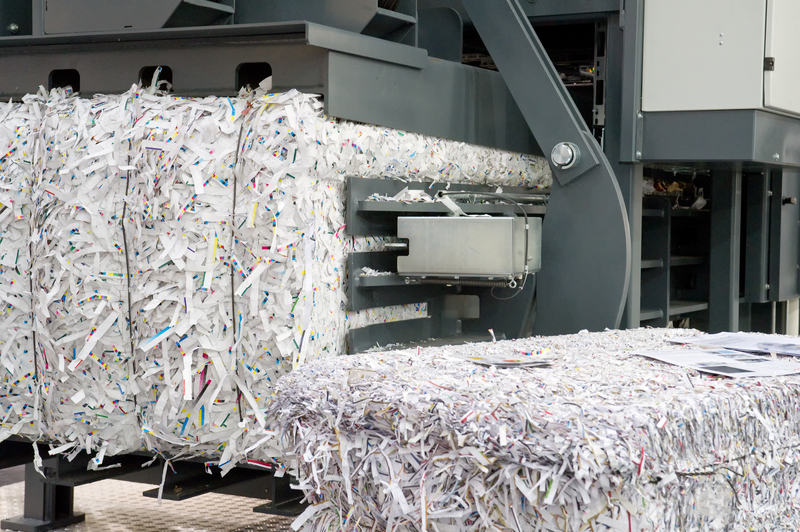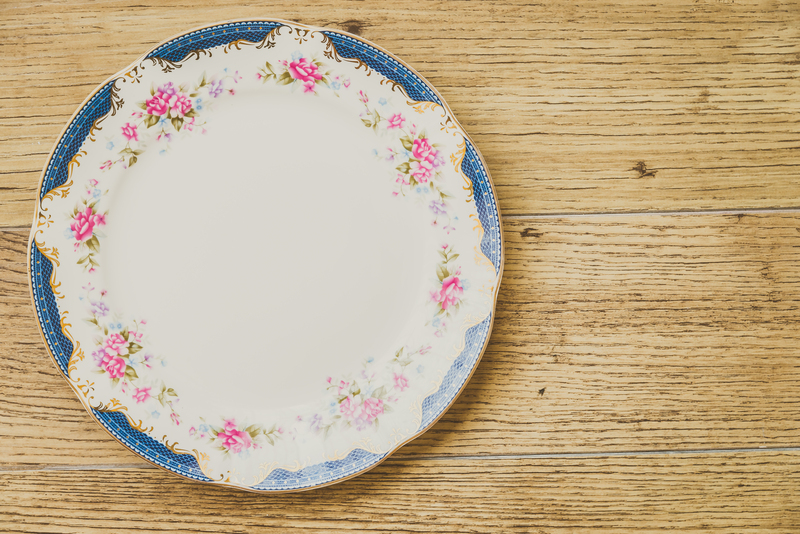Eco-Chic Living: Repurpose Trash into High-Design Treasures
In our modern world, eco-chic living is more than just a trend--it's a movement that marries sustainability with style. The concept goes beyond basic recycling, inviting us into a creative, innovative space where everyday items once considered trash are transformed into stunning, high-design treasures. In this article, we delve into the world of repurposing waste, discovering techniques, inspirations, and real-life examples that prove turning trash into treasure can be both fashionable and eco-friendly.
What is Eco-Chic Living?
Eco-chic living refers to a lifestyle that emphasizes environmentally-conscious decisions while embracing aesthetic and functional design. At its core, it's about reducing waste, making mindful choices, and striving to incorporate sustainability in everyday life--all without compromising on style. Especially in home decor and fashion, eco-chic living encourages creative reuse and pushes us to reimagine the potential of materials destined for the landfill.
Why Repurpose Trash?
The planet faces an overwhelming challenge: millions of tons of waste are produced annually, filling up landfills and polluting the environment. Repurposing trash--where discarded items are upcycled into desirable and useful objects--offers a compelling solution. This process:
- Reduces landfill waste
- Decreases demand for new resources
- Sparks creativity and innovation
- Promotes sustainable living
- Makes a positive environmental impact

From Trash to Trend: The Rise of Upcycled Design
The practice of transforming unwanted materials into high-design treasures is gaining momentum, especially in the realms of interior design and fashion. Iconic designers and creative startups are increasingly incorporating upcycled materials into their work, challenging the notion that luxury requires virgin resources.
Major brands and indie creators alike have demonstrated the potential for discarded items to become focal points in modern decor. From reclaimed wood furniture to accessories crafted from plastic bottles, eco-chic interior design is both impactful and stylish.
Repurpose Trash: Innovative Ideas for Every Room
Let's explore room-by-room ideas to repurpose trash into high-design treasures for your home:
Living Room
- Wooden Pallet Coffee Tables: Reimagine discarded pallets with a coat of eco-friendly paint and vintage wheels.
- Magazine Rack from Old Pipes: Rescue unused pipes and combine them into a geometric magazine holder.
- Glass Bottle Lamps: Convert colored glass bottles into artistic pendant lighting with simple wiring kits.
Kitchen
- Mason Jar Storage: Clean used jars and use them to organize grains, spices, or utensils.
- Wine Cork Bulletin Board: Glue together wine corks in a frame to create a functional notice board.
- Can Planters: Paint and hang tin cans as herb planters on the wall or window sill.
Bedroom
- T-Shirt Quilts: Turn old, beloved tees into memory quilts or decorative pillows.
- Drawer Dresser Revamp: Sand and repaint outdated dressers; replace knobs with vintage finds.
- Repurposed Ladder Racks: Use an old wooden ladder as a blanket or clothing rack.
Outdoor and Garden
- Tire Swings and Planters: Paint used tires for swings or stack them into colorful garden beds.
- Plastic Bottle Greenhouses: Construct mini-greenhouses from clear PET bottles.
- CD Wind Chimes: Transform scratched CDs into dazzling, sun-catching wind chimes.
The Art of Upcycling: Transforming Objects with Style
Upcycling--the creative process of converting waste materials into new products of better quality--sits at the heart of eco-chic living. Unlike traditional recycling, which often downcycles materials, upcycling adds value and uniqueness, often enhancing the original material's character.
Key elements in upcycling:
- Vision: Seeing beyond the current state of an item.
- Craftsmanship: Employing techniques like sanding, painting, sewing, or welding.
- Imagination: Combining contrasting materials for one-of-a-kind designs.
- Sustainability: Avoiding the use of harmful chemicals or wasteful processes.
Examples: Upcycled wood from construction sites may become elegant headboards. Old denim jeans stitched together create patchwork rugs of rich patterns. Discarded computer parts can be reimagined into modern art pieces or functional objects like clocks.
Fashion Forward: Eco-Chic Clothing and Accessories
Eco-chic living shines in the fashion industry, too, where designers repurpose materials once destined for the trash heap. Recycled plastic is now used in everything from high-end shoes to designer handbags. Jewelry makers shape bottle caps, cutlery, or even circuit boards into trendy earrings and necklaces.
Eco-friendly fashion isn't just about good looks; it's about living with purpose and pride, knowing your wardrobe represents a commitment to lessening environmental impact.
Popular upcycled fashion examples include:
- Recycled Sari Scarves: Vintage fabrics are stitched into vibrant accessories.
- Plastic Bag Yarn (Plarn) Totes: Shopping bags are crocheted into stylish and sturdy market bags.
- Bike Inner Tube Belts: Old tire tubes are cleaned and cut into modern, water-resistant belts.
Eco-Chic Crafting: Tips for Turning Rubbish into Relics
Thinking about starting your own eco-chic upcycling project? Follow these tips for success:
- Choose Quality "Trash": Select materials that are clean, durable, and structurally sound.
- Deep Clean: Wash, sanitize, or strip items to remove residue and ensure safety for indoor use.
- Plan Your Project: Sketch designs or create mood boards to keep your vision on track.
- Use Non-Toxic Materials: Opt for eco-friendly paints, glues, and finishes.
- Share and Inspire: Post your upcycled creations online to inspire others towards eco-chic living.
Pro Tip: Visit thrift stores, flea markets, or demolition sites for hidden gems that can become the centerpiece of your next high-design treasure!
Eco-Chic Success Stories: Inspiring Real-World Examples
All over the globe, visionaries are pioneering eco-chic living by repurposing trash into treasures. These success stories prove that sustainability can be synonymous with style and ingenuity.
- The Sea Chair: Designed by Studio Swine, the Sea Chair is crafted from plastic waste collected from oceans and beaches, beautifully showcasing the transformation of pollution into functional furniture.
- Ecoalf's Apparel: This innovative brand turns marine plastic, used tires, and coffee grounds into fashionable clothing that rivals any luxury line in quality and appeal.
- TerraCycle Art Installations: TerraCycle partners with artists to create monumental sculptures from snack bags, bottle caps, and other hard-to-recycle materials, bringing public attention to repurposing waste.
- Pallet Home by I-Beam Design: A fully functional and comfortable house constructed almost entirely from shipping pallets, demonstrating that with creativity, sustainable design knows no limits.
Getting Started With Your Own Eco-Chic Living Projects
Ready to join the eco-chic movement and turn trash into treasure? Here's a step-by-step approach:
- Identify Discarded Materials: Look at what you regularly throw away, from plastic containers to old furniture.
- Research Inspiring Ideas: Explore websites, social media, and design blogs to gather ideas for upcycling these materials.
- Gather Tools and Supplies: Basic hand tools, eco-friendly paints, and adhesives are great starters.
- Create & Document: Chronicle your process and final product through photos and journaling. This helps track your progress and inspire others.
- Share and Collaborate: Join online communities dedicated to eco-chic living and sustainable design. Collaboration fuels creativity!
Benefits Beyond the Environment
Transforming waste into high-design treasures is about more than environmental stewardship. There are additional personal and community benefits:
- Economic Savings: Upcycling is cost-effective, reducing the need to buy new home decor or accessories.
- Self-Expression: Unique, handmade items reflect your style and values.
- Empowerment: Building something beautiful from discarded materials is deeply satisfying.
- Community Engagement: Sharing eco-chic hacks fosters connections and encourages others to embrace sustainability.

Overcoming Challenges in Upcycled Design
Not every project is without its hurdles. Materials may be limited, certain items may require extra preparation, or it might take time to perfect your crafting techniques. But with patience and creativity, these challenges transform into learning opportunities drive design innovation and growth. Remember: every piece you save from the landfill is a victory for the planet and an addition to your eco-chic home.
Where to Find Repurposing Inspiration
- Upcycling Blogs: Follow creators like Upcycle That and Recyclart for step-by-step guides.
- Social Media: Instagram and Pinterest are bursting with upcycled design ideas and communities.
- Eco-Craft Fairs: Visit local markets to meet artisans and discover their creations firsthand.
- Online Forums: Join discussions in groups like r/Upcycling on Reddit.
Conclusion: The Future of Eco-Chic Living
Repurposing trash into high-design treasures embodies the best of modern living--style, sustainability, and creativity. By bringing eco-chic principles into our homes and lifestyles, we're not only reducing waste but actively shaping a brighter, greener future. The next time you eye an item destined for the trash, envision what it could become--a statement piece, a conversation starter, a cherished possession.
The world of eco-chic design is open to everyone, making it a powerful--and beautiful--way to live in harmony with the planet.
Start your own eco-chic adventure today: Reshape your home, wardrobe, and community with the power of imagination. And remember--living eco-chic isn't about having less; it's about making more from what you already have.
```